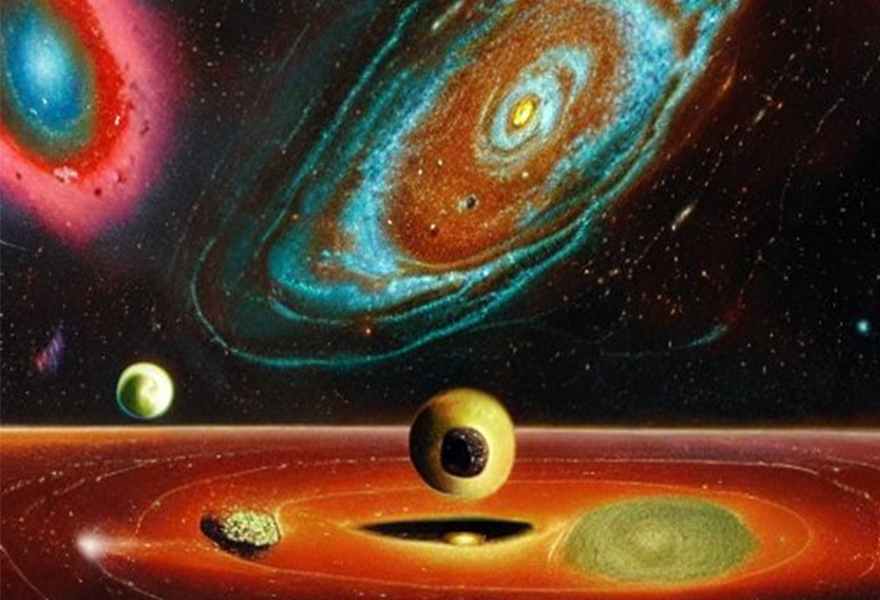Massive and high-redshift galaxies may hint at primordial quantum diffusion

The question of how structures form in the Universe might be one of the most ancient ones. Our current cosmological, Lambda Cold Dark Matter (LCDM), model points towards an incredible connection between the smallest and the largest scales, in which quantum fluctuations in the very early universe are stretched by a cosmic inflation to seed the formation of galaxies and large scale structures in the Universe. Despite the unquestionable success of LCDM in explaining the 13.8 billion years of cosmic history, the observation of large clusters of galaxies like El Gordo and, more recently, the detection of very distant galaxies by the James Webb Space Telescope challenge some of the basic assumptions of this model.
In particular, we have very good experimental evidence (thanks to the cosmic microwave background, shortened as CMB, the afterglow of the big bang itself!) that the Universe is homogeneous and isotropic at large scales with a spectrum that follows that of a Gaussian distribution. It is common to assume that this Gaussianity holds at all scales dictating the starting point of structure formation. However, the quantum backreaction of the primordial fluctuations inevitably leads to non-Gaussian tails in the spectrum, an effect that has been well studied in the context of primordial black hole formation. The question of how large these corrections are depends on the specific theory of inflation and open a window to probe an otherwise unobservable period of the very early universe after the CMB fluctuations exit the horizon and the inflationary period transitions to form the standard model particles. Despite being a tiny fraction of a second, probing cosmic inflation is key to understanding the beginning of the Universe.
In a recent paper published in Physical Review Letters, Strong member Jose Ezquiaga in collaboration with Juan García-Bellido and Vincent Vennin demonstrate that the intrinsic non-Gaussianities predicted by quantum diffusion indeed help explain the challenging observations of high-redshift abundances and heavy clusters of galaxies. Moreover, quantum diffusion also makes the interesting prediction of a suppression of the small scale structure, below the size of a galaxy, that could be tested in the near future and distinguishes it from other effects in inflation leading to non-Gausianities. Interestingly, this effect could alleviate tensions between LCDM and the observed number of substructures.
It is beautiful to think that once again it might be quantum mechanics that shape the behavior of the largest scales in the Universe.
April 18, 2023, 10:32 a.m.